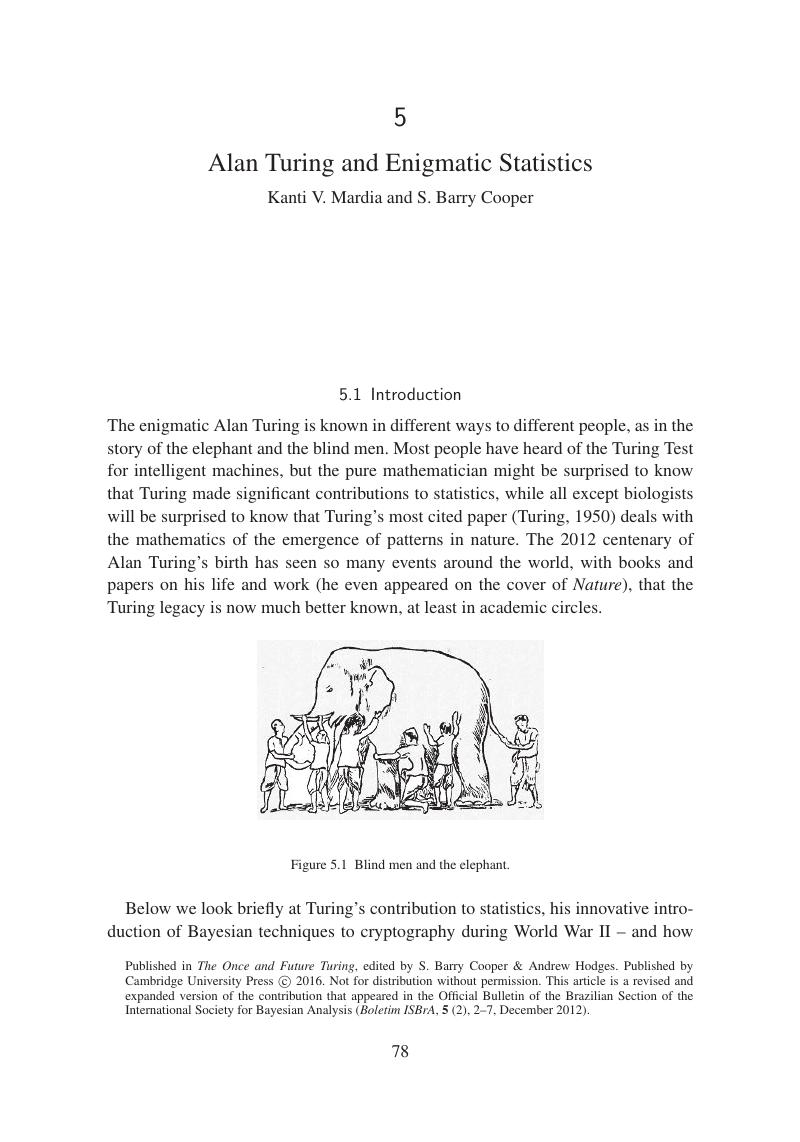Book contents
- Frontmatter
- Contents
- Contributors
- Preface
- Introduction
- Part One Inside Our Computable World, and the Mathematics of Universality
- 1 Algorithms, Equations, and Logic
- 2 The Forgotten Turing
- 3 Turing and the Primes
- 4 Cryptography and Computation after Turing
- 5 Alan Turing and Enigmatic Statistics
- Part Two The Computation of Processes, and Not Computing the Brain
- Part Three The Reverse Engineering Road to Computing Life
- Part Four Biology, Mind, and the Outer Reaches of Quantum Computation
- Part Five Oracles, Infinitary Computation, and the Physics of the Mind
- Afterword
- References
5 - Alan Turing and Enigmatic Statistics
from Part One - Inside Our Computable World, and the Mathematics of Universality
Published online by Cambridge University Press: 05 March 2016
- Frontmatter
- Contents
- Contributors
- Preface
- Introduction
- Part One Inside Our Computable World, and the Mathematics of Universality
- 1 Algorithms, Equations, and Logic
- 2 The Forgotten Turing
- 3 Turing and the Primes
- 4 Cryptography and Computation after Turing
- 5 Alan Turing and Enigmatic Statistics
- Part Two The Computation of Processes, and Not Computing the Brain
- Part Three The Reverse Engineering Road to Computing Life
- Part Four Biology, Mind, and the Outer Reaches of Quantum Computation
- Part Five Oracles, Infinitary Computation, and the Physics of the Mind
- Afterword
- References
Summary

Information
- Type
- Chapter
- Information
- The Once and Future TuringComputing the World, pp. 78 - 89Publisher: Cambridge University PressPrint publication year: 2016
References
Accessibility standard: Unknown
Why this information is here
This section outlines the accessibility features of this content - including support for screen readers, full keyboard navigation and high-contrast display options. This may not be relevant for you.Accessibility Information
- 1
- Cited by
